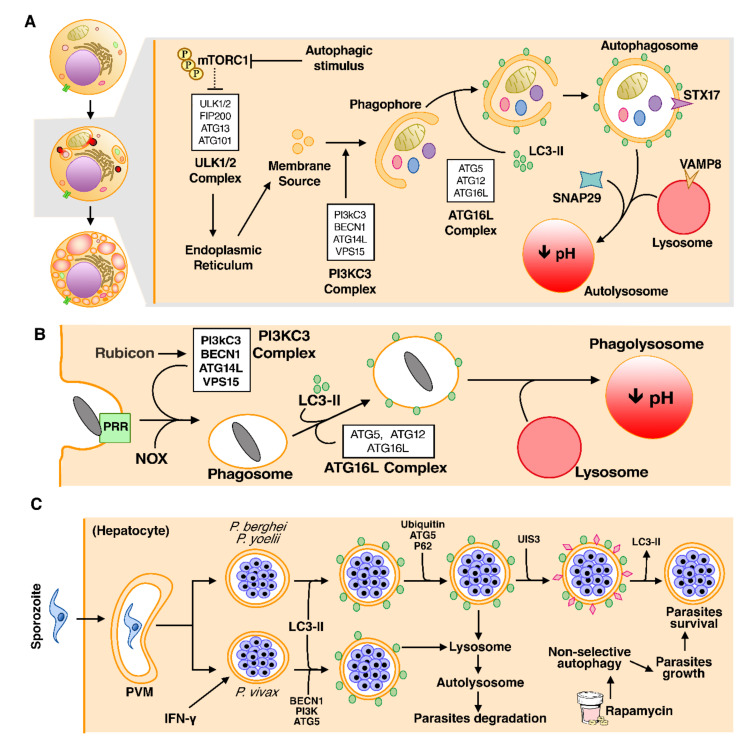Figure 3.
The different forms of autophagy can either act as a defense mechanism of the host or enhance the growth of the parasite. (A) The macroautophagy pathway, the non-selective form of autophagy. On the left side of the figure (white background), morphologically, autophagic cell death presents no changes in cell size, but is characterized by the accumulation of autophagosomes. On the right, the molecular mechanism of macroautophagy. (B) The LC3-associated phagocytosis (LAP) pathway, an unconventional form of autophagy that has some particularities, like the formation of a single membrane vesicle. (C) Different faces of autophagy in malaria infection. Host’s autophagic machinery recognizes parasitophorous vacuole membrane (PVM) and initiates the LAP-like pathway to degrade parasites. However, the Plasmodium relies on the UIS3 protein to remove LC3-II from the PVM and prevent LAP-like autophagy. In addition, pharmacological induction of autophagy induces the non-selective autophagic cell death of uninfected hepatocytes, which contributes to the growth of parasites.

